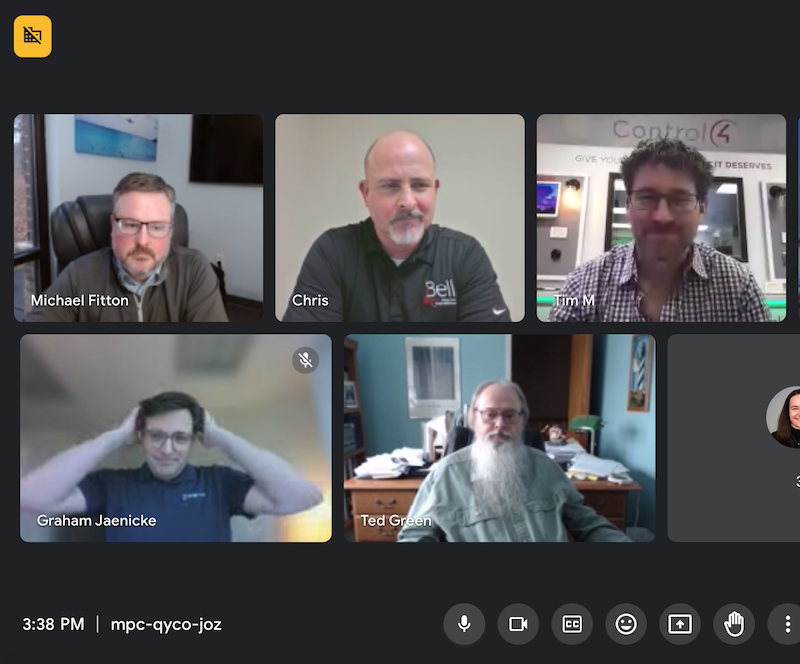On January 18, Snap One announced its Control4 Connect and Control4 Assist software and services offerings, that we designed to improve end-user experiences while empowering U.S.-based Control4 Partners to provide superior customer service, increase profitability through recurring revenue, and encourage positive long-term client relationships.
The Control4 Connect software service enables essential features that keep customers’ systems up to date and secure, provides convenient access and insights, and ensures smooth integration with new devices as they are released. Control4 Connect provides system control and functionality, while delivering in-demand smart living features such as voice control, remote access, Intercom Anywhere, When >>Then scene programming, system backups, on-the-go visibility, and personalization of notification for mobile devices. Beginning April 23, 2024, Control4 Connect will be required for all new U.S. Control4 systems. For systems installed prior to that date, 4Sight continues to be available.
Starting in April, Connect will be included on all new Control4 systems, and the annual customer cost will vary depending on the type of controller installed. Systems with a CA-1 model are free of charge, systems with a Core Lite unit cost $99, and systems with any other controller, or multiple controllers, cost $249.
Available immediately to Partners that become Assist Authorized, Control4 Assist is an optional remote support service that significantly reduces the burden of providing customer support while still providing recurring revenue benefits. For an annual fee of $899, customers get proactive system monitoring and access to the Control4 Assist Team of programmers, AV technicians and certified networking administrators who remotely solve issues, answer questions, and help manage customer experiences. The Assist Team will support customers leveraging OvrC and Composer tools and offer video assistance as needed. Control4 Assist customers can contact support staff from 8 a.m. to 8 p.m. 365 days a year.
Snap One spent more than a year developing the Control4 Connect and Control4 Assist offerings in close collaboration with 23 integrators, while also leveraging experience from thousands of Parasol customers and more than 100,000 4Sight subscribers, to ensure the services meet the needs of integrators and customers, are easy to use, and deliver in-demand experiences and enhancements.
As a follow up to this announcement, SnapOne arranged a Google Meet chat between members of the trade press and five of the 23 integrators who served on its Partner Advisory Board to help guide the development of Connect and Assist. Clarifying the depth of their involvement in the development process for Connect and Assist, Kellan Warren, from Kelltech in Dallas, TX, contrasted his experience with other manufacturers’ beta test programs he has been involved with in the past.
“So many times, with beta programs with other manufacturers, you feel like you come in so late, and there’s really no room for something to be considered and maybe implemented; they’re just looking to find some major problem that stopped them from shipping,” he noted. “Whereas with this [experience], we were [involved] so early that there were so many input phases along the way that I personally felt like my fingerprint was left on the product and services at the end of the day. There were a lot of ideas that we had as a group that were really taken into consideration and acted upon.”
Warren felt that it was an “iterative process of continual improving” of the concepts, with “small tweaks” that were made along the way. “Some of it was the verbiage in the customer-facing app, such as, ‘This is the screen… is it confusing or is this clear? Should it be on two pages? Should it be on one page?”
Mike Fitton, from Home Technology Solutions in Charlotte, NC, concurred that the involvement from the dealer council was decidedly not just a “rubber stamp” for what Snap One had already created. “It wasn’t like they came to us and said, ‘We’ve got to do this, and we’ve got to find a way to soften the impact to get it into the market with as little resistance as possible.’ Instead, it was ‘Here is our overarching idea of what we want the Control4 platform to be now and into the future, and we would like you to help us on how we can get there. The vision was presented first and then we collectively started building that vision.’”
Tim Manning from Wavelength Audio Video in Benardsville, NJ, agreed, saysing, “The whole program was designed not by Snap One but the integrators [on the Partner Advisory Board] who believe in the products from Snap One.”
More specifically, some of the Partner Advisory Board discussion centered on the best price points for the services and whether or not to make firmware updates in the Connect program automatic or dealer controlled.
“Initially the thought was that we’d just automatically do [the firmware updates], noted Ed Gilmore, from Gilmore’s Sound Advice in New York City. “But, [based on] the feedback from the 23 integrators, it was decided, “No, we’ll determine when the right time is to do these updates, so it doesn’t interfere with any of the special programming that we may have in effect. As we know, software updates can create a lot of issues down the line.”
For Chris Bell, from Bell Integrated Home Solutions in Savannah, GA, one of the questions that was ironed out by the Partner Advisory Board was the frequency of billing to the client. “The billing is what stood out for us, doing it yearly instead of doing it monthly,” he said. “From my security background, we were used to the central station doing the billing. So, having Control4 take care of that as opposed to the dealer being responsible for doing that [was familiar to us.]
The five integrators in the media discussion shared similar experiences with how they had tackled service contracts and recurring monthly revenue (RMR). Some had attempted their own programs, but had not figured out how to price them, roll them out to clients, and manage them after the sale. Others have existing programs that they’re working on trying to merge with Assist. All agreed that it was less about what their specific needs were but more about providing a viable service offering for the entire Control4 dealer base, helping those who could not manage their own programs.
“Me being a smaller dealer, I actually don’t have a remote support plan within my business,” Bell noted. “We were trying to get that off the ground for probably four years and could never find something that was a good deal for our clients and didn’t put me on the hook to be available after-hours and on the weekends. So, we kind of accepted this with open arms and it’s been really great for our business.”
Bell added that he does not feel that Assist is a threat to integration companies that worry that they’re, in essence, turning their client over to a vendor to management the relationship. “Assist is actually an extension of our business,” he clarified. “So when Assist connects to our client, we eventually get an email of what [Control4] did, how long they were on the phone, whether or not the problem was repaired, and then we have a follow-up email to that telling us if the problem was taken care of or if we needed to be on-site. So, it’s not like these things are going on behind the scenes, and we are not aware of what’s taking place. We’re not being cut out.”
Fitton is one of the integrators in the discussion who does have an existing service program with RMR, but noted this service offering is designed to go very wide in what it covers (the entire integrated system), yet is “pretty shallow” in what it covers without additional expense for the client.
“When someone contacts and needs basic support, the support team’s job is to triage that, maybe do a workaround, or do a reboot… basically get that customer back up and running in so they are covered for the night or for the weekend,” Fitton explained. “Whereas, Control4 Assist is a much narrower [limited to the Control4 platform] but deeper offering, and I think offers a lot more service and support, troubleshooting, education, etc. That’s how we view how those two things can co-exist and work in tandem with one another.”
As for Connect and making that particular service mandatory going forward? Gilmore fully supports the plan’s pricing and vision for its focus on keeping system software up to date with the latest features and bug fixes. “The concept of Connect I think is very strong,” he said. “If you looked at the data… I can tell you, having taken over a lot of projects, I’ve seen a lot of software that was completely outdated. Now, that’s obviously a relationship issue between the integrator and their client, but really the onus falls on the integrator to keep up and make sure the client has the most up to date software, so they can have the best experience. So it resonated with me about what Snap One and Control4 were trying to do.”
And when it comes to the question of Control4 billing the client directly, the dealers on the call pointed to other services that are handled the same way, from Roku and Netflix, to Ring and Nest, that require a direct billing relationship between the client and the manufacturer. And then there’s also reduced friction, as well, Gilmore pointed out.
“Frankly we didn’t have a problem with the manufacturer billing the client directly for that fee,” he said. “It’s a lot better than me having to go back to them and say, ‘If you want to add this feature, then it’s going to cost you X number of dollars,’ which I had to do in the 30 years prior. I felt like it is a much better solution. I know there has been a lot of angst about the idea of the manufacturer interfering with the integrator and client relationship, but in this way I think it really does help everybody.”







![ecobee premium airzone control The ecobee Smart Thermostat Premium. [Photo credit | ecobee]](https://restechtoday.com/wp-content/uploads/2025/06/ecobee-premium.jpg)
![Hub 3_02 The SwitchBot Hub 3 provides a user-friendly solution to the growing complexity of modern smart homes. [Photo credit | SwitchBot]](https://restechtoday.com/wp-content/uploads/2025/06/Hub-3_02-scaled-e1750179791687.png)
